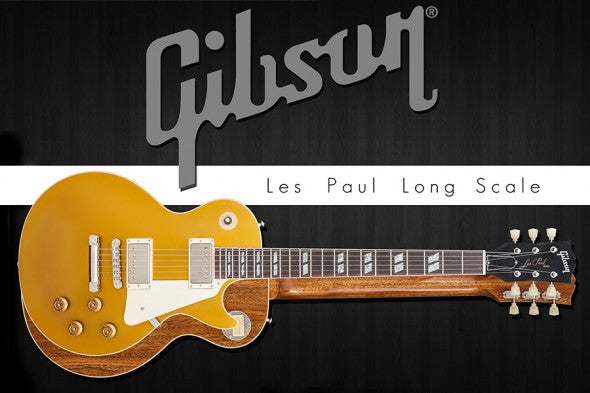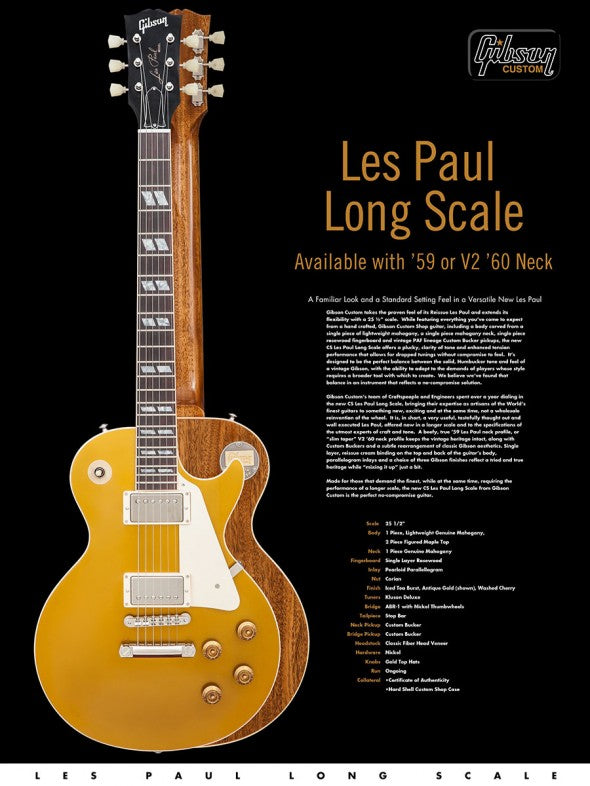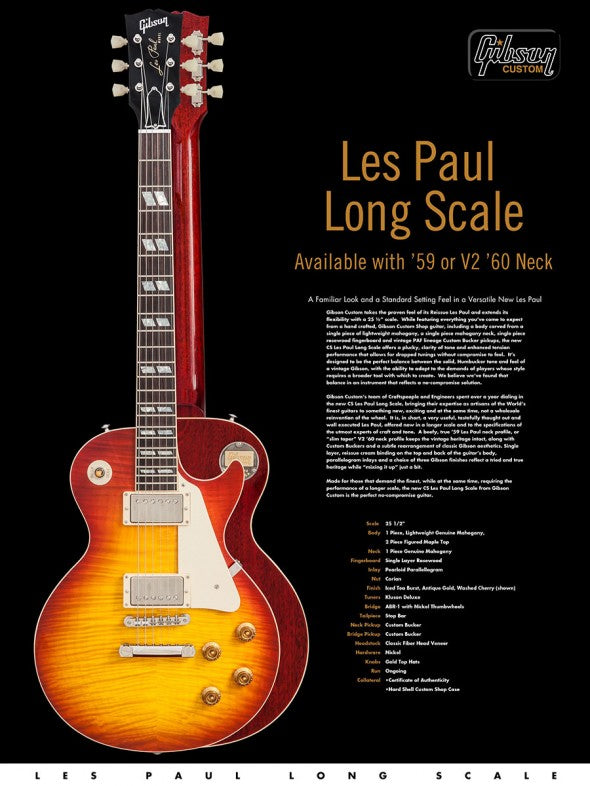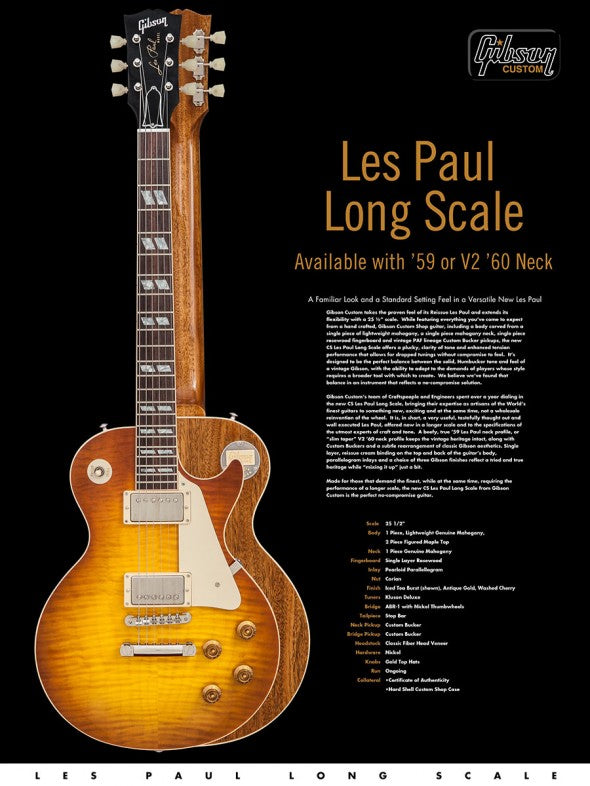Gibson Custom Shop Les Paul Long Scale

Nobody will disagree that the iconic Gibson Les Paul guitar is famous for having a tone that’s warm and mid-rangey, and synonymous with huge power chords bathed in glorious gobs of British-style tube distortion. Listen to the entire canon of British ‘70s rock, or Slash—he’s a great Les Paul ambassador as prime examples. What gives the Les Paul that tone? It’s really a combination of wood type (mahogany, which has a very warm, mid-range emphasis), a glued-in (or set) neck that yields great resonance and sustain, pickup types (humbucker or P-90s: they’re both warm), and scale length. But what’s the rub with scale length?
A guitar’s scale length is the length of its strings from the nut to the bridge saddle, and essentially the length in which the string can vibrate freely. Typically, the vast majority of guitars have one of two scale lengths; most Gibson solid-bodies have a scale of 24-3/4 inches, while Fenders have a 25-1/2 inch scale. An obvious difference regarding scale lengths is that one is longer than the other, but the difference also affects playability and tone. With a 25-1/2” scale, players will notice a tighter string tension evident when bending. The 24-3/4” scale is looser in comparison and considered easier to play. Sonically, the longer scale is brighter, with notes along the guitar’s frequency spectrum being more sharply defined and clear. The top-end truly rings out as does strong harmonic overtones. The shorter scale is conversely mellower and less bright, with an emphasis on the mid-range. No scale length is better than the other; both have different qualities and serve the needs of players…differently. Ritchie Blackmore or Jimmy Page? One favored a Strat and the other a Les Paul. Both guitars sound very different in their respective musical contexts, but they work!
Back to the Les Paul. Gibson Custom recently tried a bold experiment when it issued the Gibson Custom CS Les Paul Long Scale guitar. Visually, you can notice that it’s slightly longer, and with some unique appointments like binding on the mahogany back and split-parallelogram fretboard inlays similar to the ES-175 and ES-345 guitars–very distinctive, to be sure. Still, the big, big difference is with tone and playability. String tension is indeed tighter, which many players will appreciate. But sonically, this is a Les Paul that chimes and shimmers with top-end. You can twang and snap strings like you would on a 25-1/2” scale, bolted neck guitar, and rejoice in a low end that’s crisp with definition. Clarity and detail and definition and all that Les Paul warmth and wooliness. The longer scale also benefits players who like to de-tune, allowing you to use thicker strings but with the string tension you’d feel with an .010-.046 set.
The Les Paul Long Scales come with Custom Bucker humbucker pickups—the closest approximation to the vintage ’57 PAF that they’ve ever created. Also, they’re available a choice of neck profiles: one similar to the carve on a ’59 Les Paul and one that emulates the slim-tapered ‘60s profile. Three colors are available: Antique Gold, Ice Tea Burst, and Faded Cherry Sunburst. So, if you’ve been longing for a Les Paul with a tighter feel and brighter tone, the Custom Shop’s Les Paul Long Scale is for you!
Check out the Gibson Les Paul Long Scale guitars currently available right here!
















